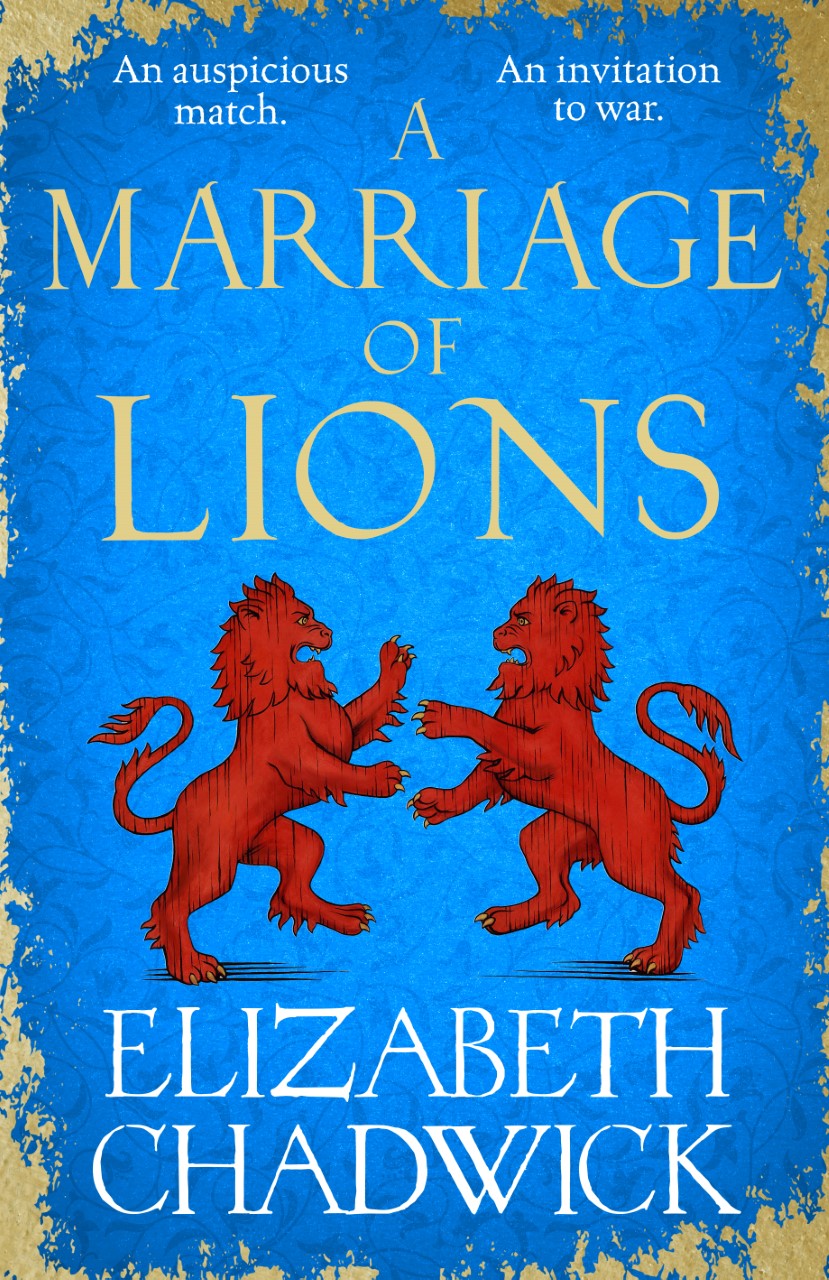
MWT797 . Watercolour copies by Charles Stothard of wall paintings for reveals of windows in the Painted Chamber, Westminster Palace. The paintings depict the triumph of Bounty over Avarice and Meekness over Anger. 1835. Charles Stothard 578 Stothard-figures-painted-chamber
A place featured in several scenes in A MARRIAGE OF LIONS is a chamber in the Palace of Westminster that no longer exists; it was destroyed by fire in the first half of the 19th century, eventually being demolished in 1851.
I have set several pivotal scenes in this room, which was King Henry III’s public and private abode when he dwelt at Westminster. Here he would receive guests, hold receptions and private talks, and conduct business with his inner circle. It was a place of rest and relaxation too. He slept here with figures of guards painted either side of his bed which had elaborate green curtains and hangings, embellished with gold stars. Behind the bed was a painting of his favourite saint Edward the Confessor, and beside the bed, was a small window, allowing Henry to look through into his adjoining chapel and watch the priests at their religious services or indeed, go to pray there himself.
The chamber was long and narrow, being around 82 feet long by 28 feet wide and was highly decorated to impress Henry’s visitors, and to bring joy to Henry himself – he derived great joy from fine architecture and high decoration and took a great interest in the design of this room. The ceiling was wooden, with bright, decorated bosses such as the seraphim one illustrated below, which is on display in the British Museum.
Although later named The Painted Chamber, the room was originally just known as The King’s Chamber. It had existed prior to the reign of Henry III and there were painted figures on the walls in the time of his grandfather Henry II, but we do not know their form. The main decoration and remodeling was to Henry III’s instruction, and was continued by son Edward I, and his son Edward after him. Henry III also had a new ‘Queen’s Chamber’ constructed to the South for his wife Eleanor of Provence. This too was demolished in the 19th century. The later name of ‘The Painted Chamber’ was coined because of the many decorative wall paintings featuring the Virtues and Vices, and various biblical figures. They were begun in 1226 and then repaired in 1263 after a fire, which began in a cracked fireplace. A motto was inscribed over the entrance door declaring in Old French ‘“ke ne dune, ke ne tine, ne prent ke desire” Which translates roughly as ‘He who has and does not give, will not receive.’ We know too that there were two lions facing each other on another wall (there’s a nod to this in my novel title).
Following the glory days of the high medieval period and the vast sums lavished on the chamber by Henry, his son and grandson, the slowly fell into neglect and the glorious wall decorations were whitewashed, or papered or covered by tapestries. The wall paintings were only ‘rediscovered’ in 1819 and the Society of Antiquarians commissioned artist Charles Stothard to make watercolour copies of the murals – see the illustration at the top of the post. Another amateur artist, Thomas Crofton Coker, clerk of Works at Westminser, made his own copies of the murals in watercolour which are now held at the V&A museum and the Ashmolean Museum in Oxford.
Left illustration is a seraphim ceiling panel from The Painted Chamber, discovered in 1816. Now in the British Museum. The right illustration depicts The Painted Chamber as a watercolour by William Capon in 1799.
A MARRIAGE OF LIONS is now available to buy in all formats in the UK. Amazon link. A Marriage of Lions
“A Marriage of Lions stands on a level with The Greatest Knight as one of her very best. If you are an Elizabeth Chadwick fan this is a must read. If you have never read Elizabeth, then I suggest you start with this one. It is one of the best historical fiction novels that I have read this year. I did not want it to finish.” Sharon Bennett Connolly, author of Defenders of the Norman Crown: Rise and Fall of the Warenne Earls of Surrey.

